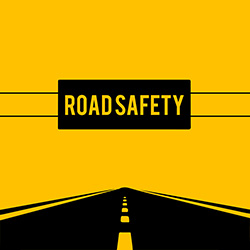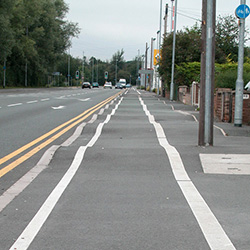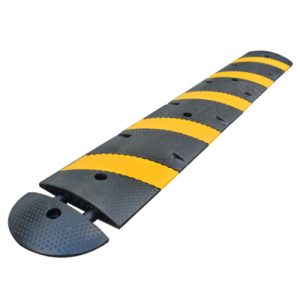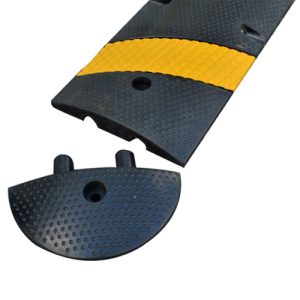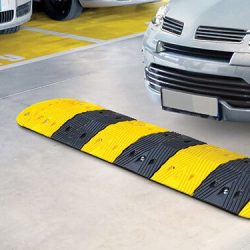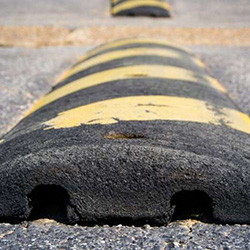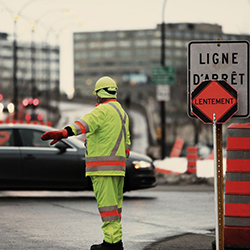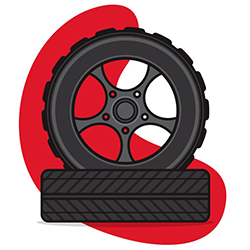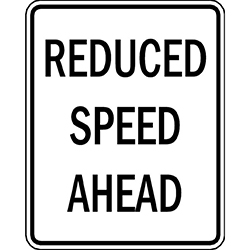The Impact of Distance / Optimizing the Placement of Speed Humps for Safe Traffic Flow
What are speed bumps for?
Common uses for speed bumps
The most common uses for speed bumps are on low-speed roads. The maximum comfortable speed to cross a speed bump is five miles per hour. Therefore, they are appropriate for parking lots and private roads with lower-speed limits. The other most common application for a bump is on residential streets with speed limits of 25 miles per hour. If you need a higher-speed bump, you should install the corresponding speed hump. Another important use for speed bumps is reducing accidents. They can make pedestrians safer. Children are particularly susceptible to injuries and accidents, and they are disproportionately affected by automobile crashes. A speed bump can decrease the risk of injury or death by up to 53%. If you’re planning a road project, speed bumps are an excellent solution. However, they are not always the best option.Speed bumps vary in height and length
A bumps’ travel length is typically three to 20 feet. A longer bump reduces speed by about five miles per hour. A shorter bump can reduce a vehicle’s speed by as much as ten miles per hour. Often, speed bumps are placed mid-block between intersections, so they slow traffic and slow emergency vehicles down. Unlike the speed bumps, speed humps are a form of road surface with a stepped surface. The bumps are usually positioned between three and twenty feet apart. In a pinch-point, the height of the bump is four to eight feet. If you want to slow a vehicle down, you can use a bump between two and ten feet. If you’re traveling at a slower pace, a rumble strip is a better choice.| SKU | Description | Length | Height | Width | Weight |
|---|---|---|---|---|---|
| SB206FT | 6 Ft Speed Bump (1) 6′ Section With no End Caps | 72″ | 2″ | 12″ | 48.40 |
| SB207FT | 7 Ft Speed Bump (1) 6′ Section + (2) End Caps | 86″ | 2″ | 12″ | 55.40 |
| SB213FT | Single Lane 12 Ft Speed Bump (2) 6′ Section With no End Caps | 144″ | 2″ | 12″ | 96.80 |
| SB219FT | Double lane 19 Ft Speed Bump (3) 6′ Section + (2) End Caps | 230″ | 2″ | 12″ | 152.20 |
| SB225FT | 25 Ft Speed Bump (4) 6′ Section + (2) End Caps | 302″ | 2″ | 12″ | 200.60 |
| SB2ECAP | End cap | 7′ | 2′ | 12′ | 3.50 |
| SKU | Description | Length | Height | Width | Weight |
|---|---|---|---|---|---|
| SB3039I | 39″ Speed Bump (1) 39″ Section With no End Caps | 39″ | 2″ | 13.7″ | 36.20 |
| SB3117I | 117″ Single Lane Speed Bump (3) 39″ Sections With no End Caps | 117″ | 2″ | 13.7″ | 108.60 |
| SB3137I | 137″ Single Lane Speed Bump (3) 39″ Sections + (2) End Caps | 137″ | 2″ | 13.7″ | 124.20 |
| SB3234I | 234″ Double lane Speed Bump (6) 39″ Sections With no End Caps | 234″ | 2″ | 13.7″ | 217.20 |
| SB3254I-2 | 254″ Double Lane Speed Bump (6) 39″ Sections + (2) End Caps | 254″ | 2″ | 13.7″ | 232.80 |
| SB3ECAP-2 | End cap | 10″ | 2″ | 13.7″ | 7.80 |
| SKU | Description | Length | Height | Width | Weight |
|---|---|---|---|---|---|
| SH1018I | 18.75″ Speed Bump (1) 18.75″ Section with no End Caps | 18.75″ | 1.25″ | 2″ | 22.20 |
| SH1112I | 112.5″ Single Lane Speed Bump (6) 18.75″ Sections with no End Caps | 112.5″ | 1.25″ | 2″ | 133.20 |
| SH1128I | 10 Ft Single Lane Speed Bump (6) 18.75″ Sections + (2) End Caps | 128.5 | 1.25″ | 2″ | 148.80 |
| SH1225I | 225″ Double Lane Speed Bump (12) 18.75″ Sections with no End Caps | 225″ | 1.25″ | 2″ | 266.40 |
| SH1241I | 20 Ft Double Lane Speed Bump (12) 18.75″ Sections + (2) End Caps | 241″ | 1.25″ | 2″ | 282.00 |
| SH1ECAL | LEFT End Cap | 8″ | 1.25″ | 2′ | 7.80 |
| SH1ECAR | RIGHT End Cap | 8″ | 1.25″ | 2′ | 7.80 |
| SKU | Description | Length | Height | Width | Weight |
|---|---|---|---|---|---|
| SH2019I | 19.75″ Speed Bump (1) 19.75″ Section With no End Caps | 19.75″ | 2″ | 3″ | 48.00 |
| SH2121I | 10 Ft Single Lane Speed Bump (5) 19.75″ Sections + (2) End Caps | 121.75″ | 2″ | 3″ | 273.00 |
| SH2240I | 20 Ft Double Lane Speed Bump (11) 19.75″ + (2) End Caps | 240″ | 2″ | 3″ | 561.00 |
| SH2ECAL | LEFT End cap | 11.5″ | 2″ | 3′ | 16.00 |
| SH2ECAR | RIGHT End cap | 11.5″ | 2″ | 3′ | 16.00 |
What is a speed hump?
It’s made of plastic and is usually used in residential areas. In addition, they are often located at the mid-block of a highway or parking lot. The bumps slow traffic down and reduce collisions. They are often placed at the end of a driveway. Whether you live in the city or on a rural street, a speed bump is an effective tool in slowing down traffic. The design of a speed bump can affect pedestrians. The most common area for them is a private road or parking lot. They can be used in cities to slow down traffic in neighborhoods. Aside from reducing vehicle speeds, speed bumps can improve the safety of pedestrians. If you live in an area with a high number of pedestrians, a speed bumps are an excellent way to slow traffic. A speed hump is not a speed bump. It is a type of bump. Its use is for slowing traffic. They are placed in public areas where the goal is to reduce speed. Some people believe that they are harmful to the environment. This isn’t true. Instead, they can cause harm to the environment. Then, you might want to install the speed bumps for safe driving. These bumps are designed to slow down traffic in a school zone. They can be installed in parking lots and on private roads. Although they are not as common as a real speed bump, they are still effective. They reduce the speed of cars to less than five miles per hour. They also make pedestrians safer. When installed correctly, they can improve the safety of pedestrians and motorists.Final words
A speed hump is similar to a speed bump, except that it is higher. Its height and length are determined by the materials used in the bumps. This is an effective way to prevent pedestrians from being hit by a car that has gone through a bump. A bump is a small, vertical, parabolic traffic calming device intended to reduce traffic speeds on low-speed roads. It is used in parking lots to slow traffic and reduce the speed of vehicles in the area. The bumps are 1.25 to 2 inches high and 12 to 14 feet wide. The length of the ramp can vary from six to eighteen inches.How to Effectively Reduce Speeds on Your Streets with Traffic Humps
The Importance of Speed Bumps in School Zones
Overview
Introduction
In recent years, there has been growing concern about the safety of children in school zones. With the increase in traffic and the fast-paced nature of today’s society, it has become crucial to implement measures that ensure the well-being of students. One such measure that has gained significant attention is the installation of speed bumps in school zones. These physical traffic calming devices are designed to slow down vehicles and create a safer environment for pedestrians, particularly children. This article explores the importance of speed bumps in school zones and highlights their role in promoting road safety and protecting the lives of young students.
Purpose of the article
The purpose of this article is to highlight the importance of speed bumps in school zones. With the safety of children being a top priority, speed bumps serve as an effective traffic calming measure to reduce the speed of vehicles passing through these areas. By slowing down the traffic, speed bumps help create a safer environment for students, teachers, and other pedestrians. This article aims to raise awareness about the significance of speed bumps in ensuring the well-being and protection of everyone in school zones.
Importance of speed bumps in school zones
Speed bumps play a crucial role in ensuring the safety of children in school zones. By slowing down the speed of vehicles, speed bumps help reduce the risk of accidents and injuries. They serve as a visual reminder for drivers to be cautious and alert, especially in areas where children are present. The presence of speed bumps also encourages drivers to adhere to the designated speed limits, creating a safer environment for everyone. Additionally, speed bumps promote a sense of community awareness and responsibility, as they signify the importance of prioritizing the well-being of young students. Overall, the installation of speed bumps in school zones is vital in protecting the lives of children and maintaining a secure educational environment.
Benefits of Speed Bumps
Reducing vehicle speed
Reducing vehicle speed is crucial in school zones to ensure the safety of children. Speed bumps play a significant role in achieving this objective. By strategically placing speed bumps along the roads within school zones, drivers are forced to slow down and adhere to the designated speed limits. This helps to minimize the risk of accidents and provides a safer environment for students to cross the road or walk to school. Speed bumps serve as a visual reminder for drivers to exercise caution and be mindful of their speed, ultimately contributing to the overall safety of the school community.
Enhancing pedestrian safety
Speed bumps play a crucial role in enhancing pedestrian safety in school zones. By slowing down vehicles, speed bumps force drivers to reduce their speed, providing a safer environment for students and other pedestrians. These traffic calming measures serve as a visual reminder for drivers to exercise caution and be aware of their surroundings. Additionally, speed bumps encourage drivers to be more attentive, reducing the risk of accidents and potential injuries. Overall, the presence of speed bumps in school zones contributes to the overall goal of prioritizing the safety and well-being of pedestrians, especially young students.
Preventing accidents
Speed bumps play a crucial role in preventing accidents in school zones. By slowing down the vehicles passing through these areas, speed bumps force drivers to be more cautious and attentive. This helps to reduce the risk of collisions and ensures the safety of students and pedestrians. Additionally, speed bumps serve as a visual reminder for drivers to adhere to the designated speed limits, promoting a culture of responsible driving. Overall, the presence of speed bumps in school zones is essential for creating a safe and secure environment for everyone.
Design and Placement of Speed Bumps
Proper dimensions and materials
When it comes to speed bumps in school zones, proper dimensions and materials are crucial. The dimensions of speed bumps should be designed in such a way that they effectively slow down vehicles without causing any discomfort or damage. They should be wide enough to cover the entire width of the road, ensuring that drivers are compelled to slow down. Additionally, the height of the speed bumps should be appropriate to ensure that vehicles reduce their speed significantly. In terms of materials, speed bumps should be made of durable and non-slip materials to withstand heavy traffic and adverse weather conditions. This ensures their longevity and effectiveness in ensuring the safety of students and pedestrians in school zones.
Strategic placement
Strategic placement of speed bumps in school zones is essential for ensuring the safety of students and pedestrians. By strategically placing speed bumps at key locations within the school zone, such as near crosswalks and entrances, drivers are forced to slow down and be more cautious. This helps to prevent accidents and encourages a safer environment for everyone. Additionally, the strategic placement of speed bumps can also serve as a visual reminder for drivers to be aware of their surroundings and to prioritize the safety of those around them. Overall, the strategic placement of speed bumps plays a crucial role in promoting the well-being of students and creating a secure school zone.
Consideration of traffic flow
When considering the implementation of speed bumps in school zones, it is crucial to take into account the impact on traffic flow. While the safety of students is of utmost importance, it is essential to find a balance that minimizes disruptions to the overall traffic movement. By carefully analyzing the traffic patterns and consulting with traffic experts, it is possible to design speed bumps that effectively slow down vehicles without causing significant congestion or delays. This consideration of traffic flow ensures that the implementation of speed bumps in school zones is both beneficial for student safety and efficient for the surrounding community.
Effectiveness of Speed Bumps
Studies and research
Studies and research have consistently shown the significant impact of speed bumps in school zones. These traffic calming devices play a crucial role in ensuring the safety of students, teachers, and other pedestrians in and around educational institutions. Numerous studies have demonstrated that the presence of speed bumps effectively reduces vehicle speeds, thereby minimizing the risk of accidents and injuries. Additionally, research has also indicated that speed bumps contribute to improved traffic flow and encourage drivers to be more cautious and attentive while driving through school zones. The implementation of speed bumps in these areas has proven to be an effective measure in promoting a safer environment for everyone involved.
Real-world examples
Real-world examples of the importance of speed bumps in school zones can be found in various cities across the country. For instance, in City X, the installation of speed bumps near schools has significantly reduced the number of accidents involving children. The presence of speed bumps serves as a visual reminder for drivers to slow down and be cautious in these areas. Similarly, in City Y, the introduction of speed bumps has improved pedestrian safety by deterring speeding and encouraging drivers to be more aware of their surroundings. These real-life instances highlight the effectiveness of speed bumps in ensuring the safety of students and pedestrians in school zones.
Positive impact on school zones
Speed bumps in school zones have a positive impact on ensuring the safety of students. By slowing down the traffic, speed bumps help to prevent accidents and create a safer environment for children to walk or bike to school. They also serve as a visual reminder for drivers to be cautious and watch out for children crossing the road. Additionally, speed bumps encourage drivers to adhere to the designated speed limit, reducing the risk of speeding and reckless driving in school zones. Overall, the presence of speed bumps in school zones plays a crucial role in protecting the well-being of students and promoting a secure learning environment.
Challenges and Concerns
Potential damage to vehicles
Potential damage to vehicles is a significant concern when it comes to the installation of speed bumps in school zones. These traffic calming measures are designed to slow down vehicles and promote safety, but they can also pose a risk to the vehicles themselves. The abrupt changes in speed and the height of the speed bumps can cause damage to the suspension, tires, and other components of vehicles. It is important for drivers to approach speed bumps with caution and reduce their speed to minimize the risk of damage. Additionally, regular maintenance and inspection of speed bumps are necessary to ensure they are in good condition and do not pose a threat to vehicles passing over them.
Impact on emergency vehicles
Driveway speed bump in school zones have a significant impact on emergency vehicles. While these traffic calming measures are effective in reducing the speed of vehicles and ensuring the safety of children, they can also cause delays for emergency vehicles trying to reach their destinations quickly. The presence of speed bumps can slow down ambulances, fire trucks, and police cars, potentially affecting their response time during critical situations. Balancing the need for speed reduction in school zones with the importance of quick emergency response is a challenge that requires careful consideration and planning.
Driver frustration and road rage
Driver frustration and road rage are serious concerns in school zones. With the increasing number of vehicles on the road, drivers often find themselves in a rush, leading to impatience and aggressive behavior. This can be particularly dangerous in areas where children are present, as it puts their safety at risk. Speed bumps play a crucial role in addressing this issue by forcing drivers to slow down and be more cautious. By creating a physical barrier that requires drivers to reduce their speed, speed bumps help to reduce driver frustration and promote safer driving in school zones. Additionally, they serve as a visual reminder for drivers to be mindful of their surroundings and the potential presence of children. Overall, the presence of speed bumps in school zones is essential for ensuring the safety of both drivers and pedestrians.
Conclusion
Summary of key points
In summary, speed bumps play a crucial role in ensuring the safety of children in school zones. They are effective in slowing down vehicles and reducing the risk of accidents. By forcing drivers to decrease their speed, speed bumps provide a safer environment for students to cross the road and navigate the school area. Additionally, speed bumps serve as a visual reminder for drivers to be cautious and attentive in school zones. Overall, the presence of speed bumps in school zones is essential for the protection and well-being of students.
Importance of implementing speed bumps
Speed bumps play a crucial role in ensuring the safety of students in school zones. By implementing speed bumps, drivers are forced to slow down, reducing the risk of accidents and injuries. These traffic calming measures create a safer environment for children to cross the road and for parents to drop off and pick up their kids. Speed bumps also serve as a visual reminder for drivers to be cautious and mindful of their speed. Overall, the presence of speed bumps in school zones is essential for promoting the well-being and protection of students.
Call to action for safer school zones
To ensure the safety of our children in school zones, it is crucial that we take action now. By implementing speed bumps in these areas, we can effectively slow down vehicles and reduce the risk of accidents. Speed bumps serve as a visual reminder for drivers to adhere to the designated speed limits, creating a safer environment for pedestrians and students. It is essential for parents, teachers, and local authorities to come together and advocate for the installation of speed bumps in school zones. Together, we can make a significant difference in ensuring the well-being of our children and promoting safer school zones.

